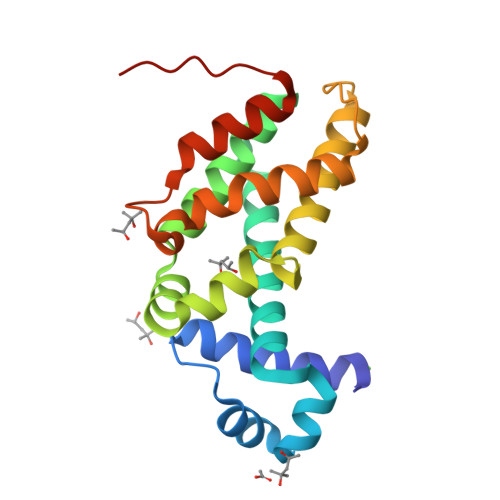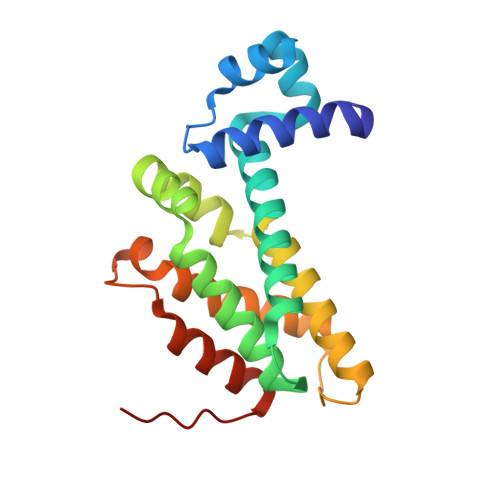Natural Guided Genome Engineering Reveals Transcriptional Regulators Controlling Quorum-Sensing Signal Degradation.
El Sahili, A., Kwasiborski, A., Mothe, N., Velours, C., Legrand, P., Morera, S., Faure, D.(2015) PLoS One 10: e0141718-e0141718
- PubMed: 26554837
- DOI: https://doi.org/10.1371/journal.pone.0141718
- Primary Citation of Related Structures:
4ZA6 - PubMed Abstract:
Quorum-quenching (QQ) are natural or engineered processes disrupting the quorum-sensing (QS) signalling which controls virulence and persistence (e.g. biofilm) in numerous bacteria. QQ involves different enzymes including lactonases, amidases, oxidases and reductases which degrade the QS molecules such as N-acylhomoserine lactones (NAHL). Rhodococcus erythropolis known to efficiently degrade NAHL is proposed as a biocontrol agent and a reservoir of QQ-enzymes for biotechnology. In R. erythropolis, regulation of QQ-enzymes remains unclear. In this work, we performed genome engineering on R. erythropolis, which is recalcitrant to reverse genetics, in order to investigate regulation of QQ-enzymes at a molecular and structural level with the aim to improve the QQ activity. Deep-sequencing of the R. erythropolis enhanced variants allowed identification of a punctual mutation in a key-transcriptional factor QsdR (Quorum sensing degradation Regulation) which regulates the sole QQ-lactonase QsdA identified so far. Using biophysical and structural studies on QsdR, we demonstrate that QQ activity can be improved by modifying the regulation of QQ-enzymes degrading QS signal. This modification requiring the change of only one amino-acid in a transcriptional factor leads to an enhanced R. erythropolis in which the QS-signal degradation pathway is strongly activated.
Organizational Affiliation:
Institute for Integrative Biology of the Cell (I2BC), CNRS, CEA, Univ. Paris-Sud, Université Paris-Saclay, 91198 Gif-sur-Yvette Cedex, France.






















